“There are those which study and question the visible, those which put down and communicate ideas, and those done from memory. Each type of drawing speaks in a different tense. To each we respond with a different capacity of imagination.”
John Berger
By Rodolfo Andaur | Images courtesy the artist
From an antagonistic or belligerent position, as Latin Americans we have integrated various analyses into our existences about the phenomena provoked by the political violence our continent has experienced in so many periods of its immeasurable history. Certainly, this reflection—which for many would be irrefutable—forms part of a complex study that demonstrates the way the image of violence has multiplied throughout the continent’s social imagination. All of these events that were driven by the most extreme fervor have come to form part of a political tract that, in more than one case, has professed—and still professes—adherence to democratic processes and sociocultural changes that today have taken on varied and specific configurations.
The most significant focal points in regarding this ‘political intensity’ occurred between the forties and the seventies of the twentieth century. Still, memories of them continue to arise, and what has happened in recent years with the constant apparition of democratic authoritarianism versus social movements that defend various socially urgent matters has created a fierce and appalling image of the complicated political panorama that some countries in the region are living through. It is well known that during the periods of dictatorship, the blows/attacks/ knee-jerk reactions from military and ‘politicians’ to crush human rights have been infinite. Less well known are the same profanations of personal freedoms that occur in democratically elected governments, and from which our country has not been exempt.
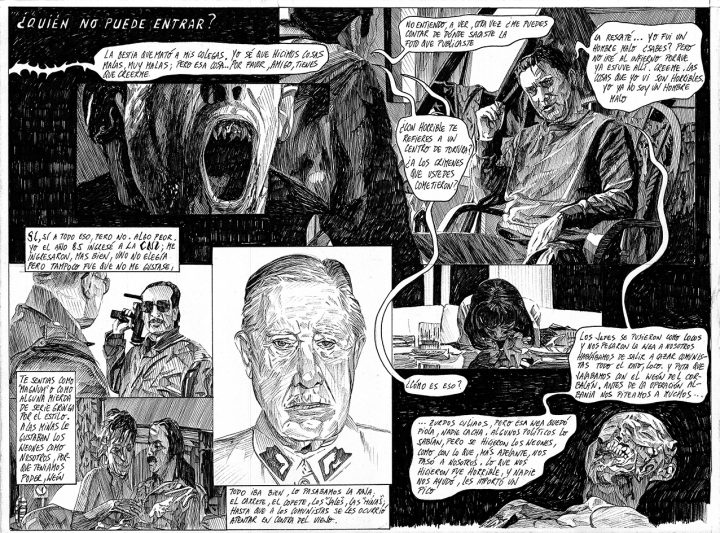
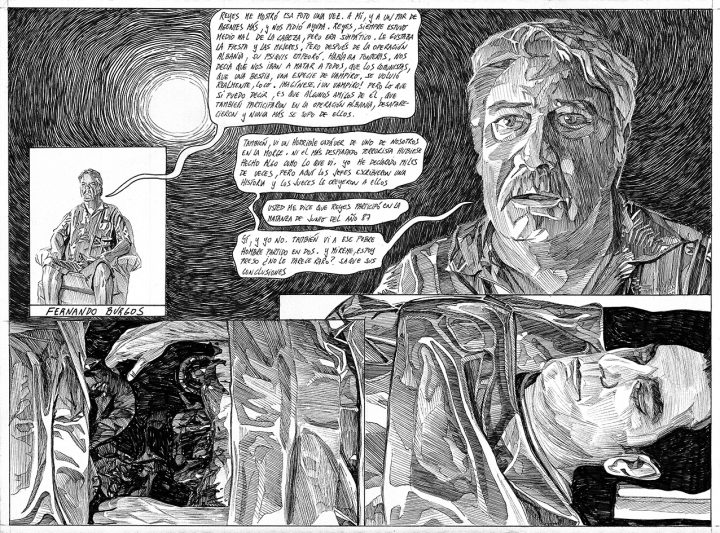
As such, we see that much of the discourse created around our most recent history is established from a calculated annulment of democratic practices. These situations break absolutely with the logic of the accords imposed by a series of governments of different coalitions. Meanwhile, we are experiencing a social process that bears the effects of the complex neoliberal treatment with which we have been forced to live (or survive). A treatment that proves to be more brutal every day, and that has engendered in us various suspicions about the social “being” in a country like Chile. We could also infer that this country has set that standard as a laboratory where the State has promoted a series of exercises that radicalize and conceal crimes against humanity, a situation that leaves a broad mark on the political discourse of the last forty years.
Today, no one could be unaware that some social actors have opened a space that seeks, with real urgency, to go deeper into these events that marked history throughout this immense, multicultural region. And these acts, as they emphasize our shadowy past, are not only part of the placards attempting to annul the unexpected—for some—appearance of the Trump era, but also of the those methods by which the habits of political violence continue appearing in minds at the same time as current ideals in various parts of the world.
In many cases, these are the subjects that Chilean artists have sought in order to cultivate their leitmotifs and illustrate scenes that have marked the national political history. That is to say, basically these artists have been blurring part of the memory that has exposed the keys of a broken institutional system that has transformed the State into a handout mechanism.
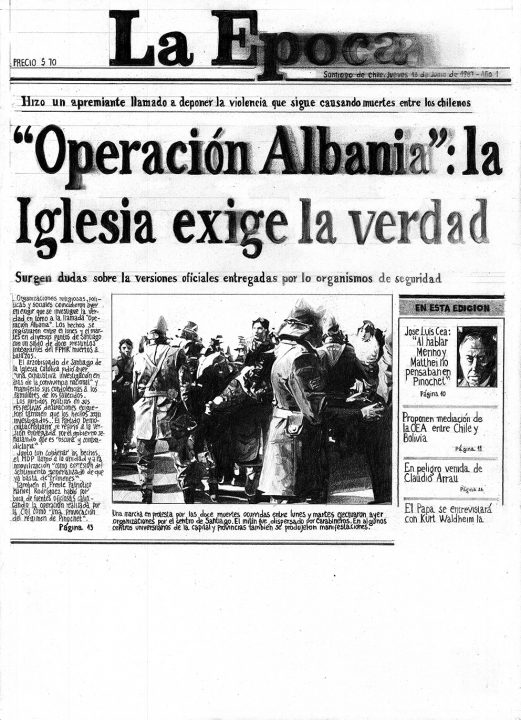
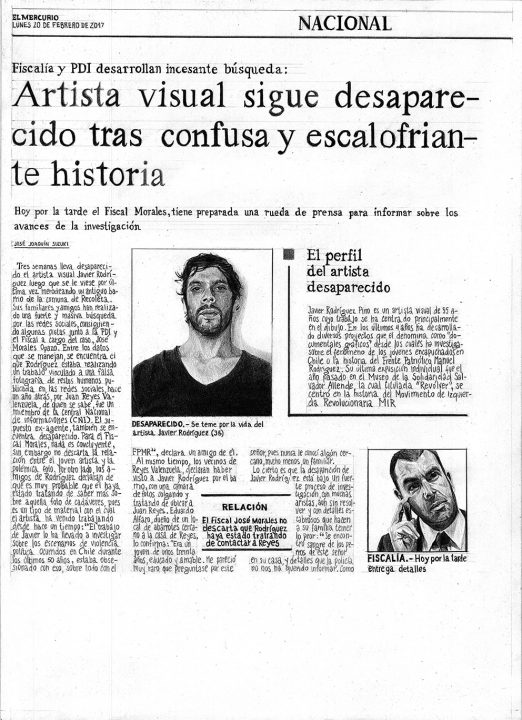
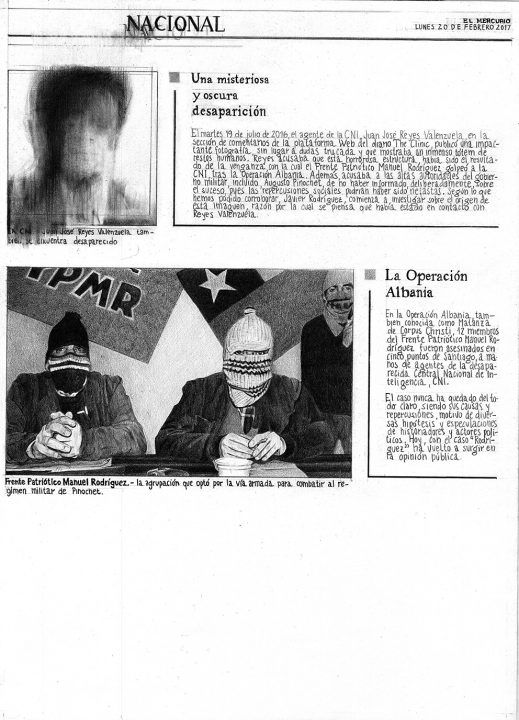
The complexity that appears when we amplify these subjects that have reverberated through our nation’s contemporary art scene obeys the intentions we have as we look back on the annals of a recent era. In this context, the visual artist Javier Rodríguez has consolidated an imaginary that highlights a reality centered strictly on the dualities of violence both in its various forms and its most visceral content. However, in his works Rodríguez has condemned a way of observing linked to histories that have been detailed through fiction. Now, from the other side of the street, we him reconvening a couple of experiences on which he has turned his gaze, certainly toward other boundaries that lead us toward meticulous spaces that exemplify the invectives of the dictatorship and post-dictatorship periods.
That is why, when analyzing the absurdity of the content that marked the appearance of anarchist movements in Chile and also in much of Latin America with terror, we conclude that Rodríguez proposes an unmasking of a conservative discourse superimposed on the political one of the revolutionary facet, in conjunction with all the expectation and mystery that shrouded the image, in particular, of the subversive groups. For example, the most eloquent mark of the Frente Patriótico Manuel Rodríguez FPMR (Manuel Rodríguez Patriotic Front) was its unusual appearance that provoked panic in the dominant classes. In this regard, the exhibition and certainly this book twist us up with a series of images and texts that are expounded on within a collective space, to put them to a logical test before the inflamed binomial of art and politics at the dawn of this century. As such, the juxtaposition of these banners, which have generated terror and mystery, justify this project’s title: Antichrist.
Through the use of drawing, the fictional passage through cinema and the aesthetic of the comic, Antichrist becomes a project of photorealism is wrapped in the sinister aura of the mythical vampire alongside actual events. For this, the artist mixes the vampire with historical information regarding “Operation Albania”, which occurred in the winter of 1987, when the CNI murdered twelve members of the FPMR. Along with these historical events that are approached through drawing, though with a dark turn toward the logic of the comic as a filmic script, this project opens other niches to us so we can perceive the circumstances that surrounded these landmarks in the extreme violence perpetrated by the State.
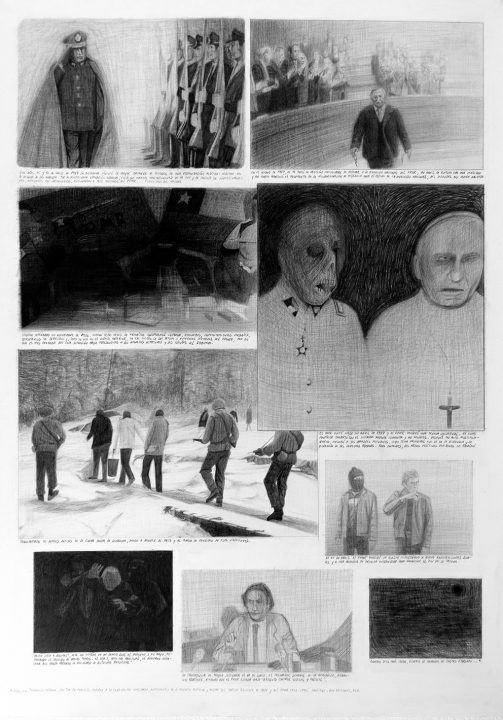
Using the most outrageous conjectures, the images in Antichrist shake their documentary platform, built to maintain either an official or metaphorical discourse on the concealment of information that condemns myth. In its context, this exhibition inexorably expands many aphorisms; this is due to the fact that Rodríguez has been challenging other visual and audiovisual discourses that have permeated his creative process. Specifically, in this case, the whole volume of information he has compiled, on one hand, is an attempt to recount his political task, and, on the other, seeks to instate an artistic project in which we will be able to gather various concepts that lead us to conceive other dialectics around drawing.
The matchless premise in the sequences of these drawings lies in the documentary fiction, which with its magical and unexpected nature is able to invoke a physical environment mediated by the textures presented by the protagonists. At the same time, this calls into question the role of the graphic documentary Rodríguez presents, since the complex panorama—or the reality that the visual culture imposes—succumbs to the economic skepticism that we experience and that certainly goes on to calibrate the future of politics. Thus, the graphic documentary outlines events and testimonies that in the past could have been used to build libertarian Latin American utopias, but that now demonstrate that all of these chimeras are part and parcel of the same hypocritical tale.
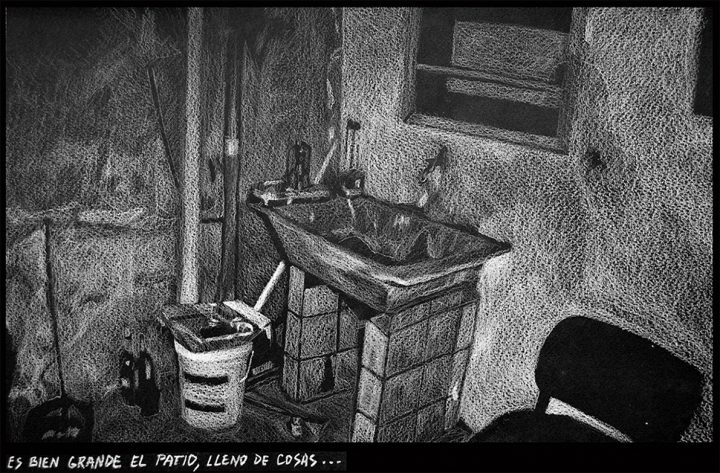
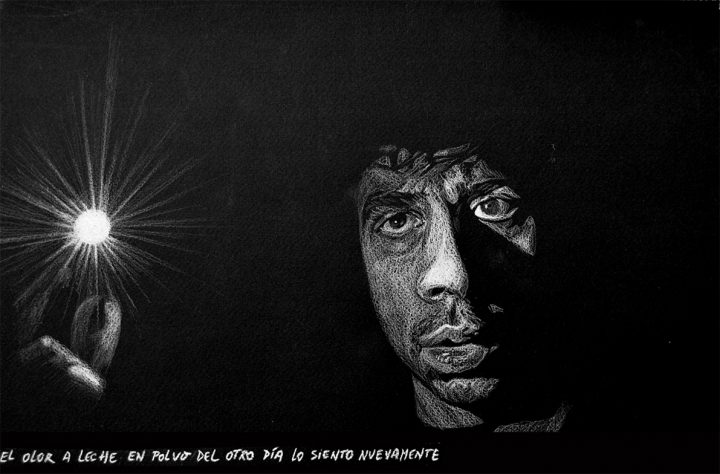
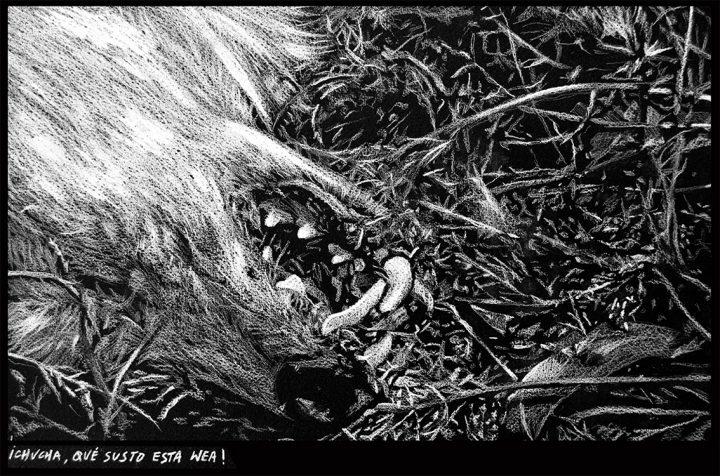
Likewise, the space that has been prepared for us observe these images identifies us with the contextual key to the cruelty with which the political system has justified its place to survive the passage of years. In other cases we see how the discourses used to justify the atrocities of one or another band have been legitimized and transformed. For a couple of decades now, we are being threatened as a society by the flagrant measurement that has been written by the great Empire, which only makes us realize the prejudices they have imagined about how we have fostered the political, cultural, economic, and social conditions that validate our “economic” identity, an effect that has provoked the demonization of the social movements’ legitimacy.
The vision issued from this interplay, based on drawing, structurally decontextualizes aspects unique to the storylines presented by a symbolic reading of the traces left by repression, its ideals and images, in an exposition space. Although this artist tries with these precepts to unite and separate the experience that both the fiction and the actual facts have entailed for him, he offers us an environment that shakes up those channels that have manipulated the empirical and the imprecise. At times, the dialogues in Antichrist summon us to consider the political-ideological identities of leftist intellectuals and all the interpretations that could arise about violence and democracy.
Antichrist literally externalizes the positions through which violence becomes a political instrument for the resolution of conflicts of varying magnitudes. Through photographic realism, it calls for an analytical comparison that exposes in a series of chapters the explanatory elements that lead us toward an understanding of the relationship between acts of political violence, the conspiracy of the State, and the social demands that have long sought to establish dialogues in order to generate a critical mass, one that could articulate a kind of shield against the constant threats of a political structure that is slowly drowning us.

 Español
Español